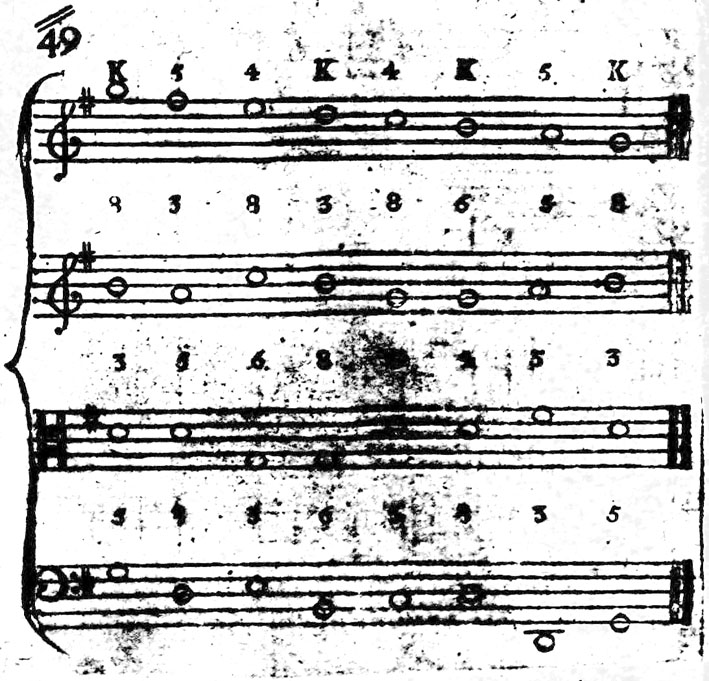John Frederick Lampe, in his A Plain and Compendious Method of Teaching Thorough Bass, London, Wilcox, 1737, describes major and minor triads, which he calls “common chords” or “perfect harmonies” (p. 14), adding that these chords receive their name from their “ground note,” their fundamental (p. 16). He further explains that any ground note may be made a key note and that the third note makes the chord, and therefore the key, either sharp or flat (p. 22-23). Lampe makes the reader aware that sharp and flat keys respectively show the same series of intervals, independently of their “key note.”
In the examples that follow, the key note (the tonic) usually is denoted by the letter “K.” The other notes are denoted by their position in the scale, “2nd,” “3d,” “4th,” “5th,” etc. But these may describe either the scale of fundamentals, or the real bass, as appears in the following example, where one first reads the thorough bass, ciphered K–2d–3d, then the “Natural” (i.e. the fundamental) bass, ciphered K–5th–K. One will note in addition the arabic numerals indicating the position of the chords in the line “thorough bass.”

John Trydell, Two Essays on the Theory and Practice of Music, London, Wilcox, 1737, makes use of a similar notation in his figure 49, shown below. The Arabic numerals above the three lower staves merely show thorough-bass figures above the bass line, but the ciphers above the top line describe the fundamental bass, with K indicating the tonic and the other figures the degrees above it. The line reads « K 5 4 K 4 K 5 K », which could be translated in Roman numerals as « I V IV I IV I V I ».

N. Meeùs
